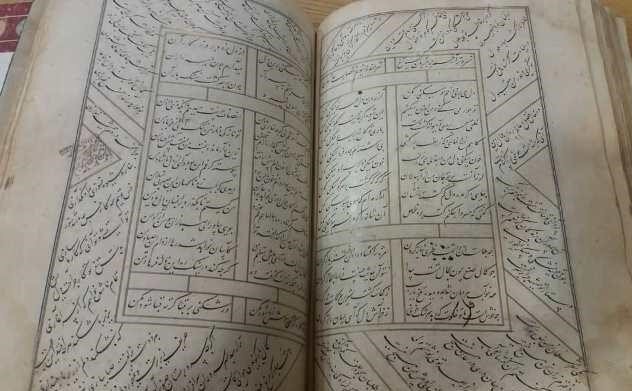Iran national library preserves 560-year-old divan of “Parrot of India”

TEHRAN – A rare manuscript of a divan of Amir Khosrow Dehlavi, the greatest Persian-writing poet of medieval India who was known as the “voice of India” or “Parrot of India”, is preserved at the National Library and Archives of Iran (NLAI).
This manuscript dating back to 560 years ago is the oldest copy of the divan, which is the first book of five divans written by the poet, an NLAI bibliographer Hamzeh Moradi-Bahram said in a press release on Monday.
The divan entitled the Tohfat al-Seghar (“A Gift from Childhood”) contains the poems Amir Khosrow Dehlavi composed between 12 and 20.
The book has been inscribed by Ghias ad-Din ibn Vali Qasemi in 880 AH during the Timurid period (1370–1507).
Quatrains by Persian polymath Omar Khayyam Neyshaburi have also been written on the margins of the pages in the divan.
Nasser ad-Din Abul-Hassan Amir Khosrow Dehlavi, (1253-1325) was a son of Amir Sayf ad-Din Mahmud, a Turkish officer, and an Indian mother. He was born in Patiyali and early on displayed his poetical talent, encouraged by his maternal grandfather, Emad al-Molk.
His master in poetry was Shahab ad-Din Mahmera Badauni, who had written religious and panegyric verse. Khosrow took service with Sultan Balban’s family, accompanying his son Boghra Khan to Bengal and later his eldest son to Multan.
There the prince was killed by the Mongols in 1284 and the poet captured. Afterwards, he went with the governor Hatam Khan to Oudh and returned to Delhi in 1289.
He was a favorite of Sultan Jalal ad-Din Khalji (1290-96) and of his assassin Ala ad-Din Khalji (1296-1315), under whom he wrote most of his works.
After enjoying the favor of Qotb ad-Din Mobarakshah (1316-20), Ghias ad-Din Toghloq (1320-25), and for a short time Mohammad Toghloq, Khosrow died in 1325. One should not blame him for his shifting allegiances in a confused political situation; this was the normal practice of medieval poets.
The Wast al-Hayat was another divan he collected between 1273 and 1284. The Ghorrat al-Kamal carries poems written between his 34th and 43rd years.
In 1316, Khosrow collected the Baqiya-ye Naqiya, and shortly before his death, the Nehayat al-Kamal.
Photo: The Tohfat al-Seghar by poet Amir Khosrow Dehlavi is preserved at the National Library and Archives of Iran.
MMS/YAW
No comments:
Post a Comment